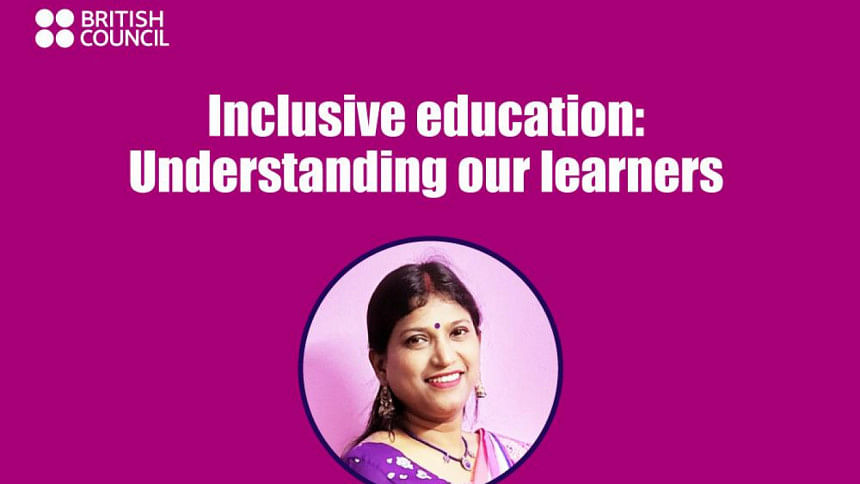Inclusive education is all about understanding different learners

Inclusive education means all diversities and unique characteristics of students are welcomed and celebrated in the classroom without discrimination. It is about understanding different learners and is based on a teaching model where all students, regardless of differences in abilities, come together in one learning environment. The latest episode of the British Council webinar series, in collaboration with The Daily Star, brought forth the importance of integrated, inclusive education. The session titled 'Inclusive Education: Understanding Our Learners' aired live on 13 December 2022. The session was hosted by Wendy Naylor, a consultant at The British Council. As an expert in education for special children, Dream Angels Centre for Autistic Children's Executive Director and Occupational Therapy Consultant Anima Das Nupur also shared her views and insights regarding inclusive education.
Anima explained why teachers need to be conscious of ADHD, down syndrome and other disabilities. She explained that special children often have sensory, facial and communication problems, which need to be understood and specifically catered for. "For instance," she said, "students may have an issue of sensitivity in the auditory system due to which they may not like loud sounds. It gets problematic for such an autistic student when the teacher leads the whole class to rhyme or sing in a large classroom. The loud sound can make them feel anxious and aggressive." On the contrary, she added that other children with auditory processing problems such as hypersensitivity need instructions in a loud sound to function. In that case, if the teacher speaks politely in a low pitch, the lesson will not be suitable for those students.
Wendy added that children with autism often experience different triggers that can cause anxiety in them. "But it is difficult for teachers to know and understand students as individuals. Due to traditional large classrooms in Bangladesh, it is always difficult to recognise students as individuals even if they have autism or not," said Wendy. Anima described how students with down syndrome do not like to write with pencils due to lesser muscle power. In such cases, these students need larger, darker pencils or colourful alternatives. Anima suggested using some specially made round-shaped colour pencils that can be held with five fingers, which require less pressure from the hand while writing and are useful, such as board markers. In addition, foam balls can be used to train their hands if special tools are unavailable. She added that it is important for teachers to understand the diverse challenges that such children face so they can help students with specific needs.
Anima also recommended some other ways to make classrooms suitable for students with disabilities, such as a sufficient sound system, arrangement for special materials, e.g. children with cerebral palsy need wheelchairs for their seating problem, and shadow teachers. A shadow teacher is an expert with special children who will be with a special child for the first 3 to 6 months when they will be admitted to a regular school. The shadow teacher can help them adjust to the new environment. Besides these methods, teachers in regular schools should talk with their parents and therapists to learn the best language of communication. Wendy suggested that parents or family members can play this role as they know their children's issues well if a shadow teacher cannot be arranged.
Visual routines or timetables of classes are important to keep students with special needs in check. For every 45 minutes in the classroom, they should get a 15-minute break. Flashcards or pictures can be utilised to help give instructions, teach vocabulary and different scenarios, and make requests for anything the students might need. Moreover, predictable lesson activities, personalised schedules, and conscious seating arrangements can keep them calm and organised. To make special students feel comfortable and supported, sometimes one-to-one teaching sessions are required as well.
Understanding of the benefits of diversity is growing. Creating an inclusive school environment leads to more inclusive communities and workplaces, which has been shown to lead to healthier, more resourceful and creative spaces, services and products.

 For all latest news, follow The Daily Star's Google News channel.
For all latest news, follow The Daily Star's Google News channel. 








Comments